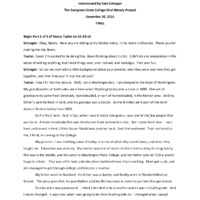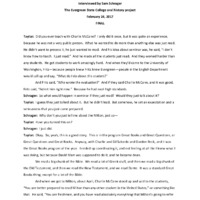Nancy Taylor Oral History Interview
Item
- Identifier
- Title
- Date
- Creator
- Contributor
-
TaylorNancy
-
Nancy Taylor Oral History Interview
-
December 20, 2016
-
January 5, 2017
-
February 24, 2017
-
February 28, 2017
-
Nancy Taylor
-
Sam Schrager
Position: 370 (14 views)



